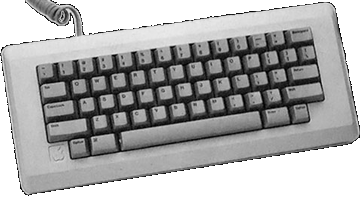iPhone 5s

Essentials
Family: iOS
Codename: ?
Minimum OS: iOS 7.0
Maximum OS: iOS 8.4
Introduced: September 2013
Processor
CPU: Apple A7 (Cyclone)
CPU Speed: 1.3 GHz
CPU Cores: 2
FPU: integrated
Bus Speed: ?
Register Width: 64-bit
Data Bus Width: 64-bit
Address Bus Width: 64-bit
Level 1 Cache: 64 kB data, 64 kB instruction
Level 2 Cache: 1 MB on-processor
Level 3 Cache: 4 MB on-processor
Motion Coprocessor: M7
Onboard RAM: 1 GB
Maximum RAM: 1 GB
Video
Screen: 4" multi-touch
GPU: 4-core 450 MHz PowerVR G6430 (via A7)
Max Resolution: 1136x640 ("Retina")
Video Out: HDMI, VGA (via Lightning adaptors), AirPlay
Camera: 8 MP back (w/dual LED flash), 1.2 MP front
Storage
Flash Drive: 16/32/64 GB
Input/Output
Lightning: 1
Audio Out: stereo 16 bit mini
Speaker: mono
Microphone: mono
Sensors: Touch ID, Accelerometer, Proximity sensor, Ambient light sensor, Three-axis gyro
Networking
Wi-Fi: 802.11a/b/g/n
Bluetooth: 4.0
Cellular:
- Model A1533 (GSM, North America)
- UMTS/HSPA+/DC-HSDPA (850, 900, 1700/2100, 1900, 2100 MHz)
- GSM/EDGE (850, 900, 1800, 1900 MHz)
- LTE (Bands 1, 2, 3, 4, 5, 8, 13, 17, 19, 20, 25)
- Model A1533 (CDMA, Verizon)
- CDMA EV-DO Rev. A and Rev. B (800, 1700/2100, 1900, 2100 MHz)
- UMTS/HSPA+/DC-HSDPA (850, 900, 1700/2100, 1900, 2100 MHz)
- GSM/EDGE (850, 900, 1800, 1900 MHz)
- LTE (Bands 1, 2, 3, 4, 5, 8, 13, 17, 19, 20, 25)
- Model A1533 (CDMA, China Telcom)
- CDMA EV-DO Rev. A and Rev. B (800, 1700/2100, 1900, 2100 MHz)
- UMTS/HSPA+/DC-HSDPA (850, 900, 1700/2100, 1900, 2100 MHz)
- GSM/EDGE (850, 900, 1800, 1900 MHz)
- Model A1453 (CDMA, US/Japan)
- CDMA EV-DO Rev. A and Rev. B (800, 1700/2100, 1900, 2100 MHz)
- UMTS/HSPA+/DC-HSDPA (850, 900, 1700/2100, 1900, 2100 MHz)
- GSM/EDGE (850, 900, 1800, 1900 MHz)
- LTE (Bands 1, 2, 3, 4, 5, 8, 13, 17, 18, 19, 20, 25, 26)
- Model A1457 (GSM, UK/Europe/Middle East)
- UMTS/HSPA+/DC-HSDPA (850, 900, 1900, 2100 MHz)
- GSM/EDGE (850, 900, 1800, 1900 MHz)
- LTE (Bands 1, 2, 3, 5, 7, 8, 20)
- Model A1530 (GSM, Asia Pacific)
- UMTS/HSPA+/DC-HSDPA (850, 900, 1900, 2100 MHz)
- GSM/EDGE (850, 900, 1800, 1900 MHz)
- FDD-LTE (Bands 1, 2, 3, 5, 7, 8, 20)
- TD-LTE (Bands 38, 39, 40)
Location: Assisted, GLONASS, Digital Compass, Wi-Fi, Cellular
Miscellaneous
Battery Life:
- Talk 10 hrs (3G)
- Standby 250 hrs
- Internet 8 hrs (3G), 10 hrs (LTE/Wi-Fi)
- Video 10 hrs
- Audio 40 hrs
Dimensions: 4.87" H x 2.31" W x 0.3" D
Weight: 0.25 lbs.

Introduced in September 2013, the iPhone 5s continued the "tick/tock" iPhone release cycle, maintaining the exterior design of the iPhone 5 while significantly improving the underlying hardware. Apple billed the iPhone 5s as "The Most Forward-Thinking Smartphone in the World," at least in part to acknowledge that many of the improvements were not of immediate consumer value, but layed groundwork for future improvements.
The iPhone 5s shipped with iOS 7 (the first OS design effort supervised by Chief Design Officer Jony Ive), which represented both a groundbreaking change to the user interface and a work-in-progress. Gone were the round, "lickable" buttons inherited from the now decade-old OS X design language. Gone were many (but not all) of the skeuomorphic elements of the Scott Forstall era. In their place was a new "flat" design, carried over to all of the core OS and many of the apps. The emphasis was on gradients and translucency rather than 3D effects and shadows. The changes were sweeping and, in some areas, incomplete; It would be another year before the release of iOS 8, which polished many of iOS 7's rough edges.
The iPhone 5s shipped with an Apple designed A7 system-on-a-chip, which for the first time was based around a 64-bit architecture, a first for an ARM-based mobile device. The customer-facing benefits of the new architecture were necessarily abstract; Apple's marketing focused on "desktop-class" performance, but the movement to a 64-bit architecture represented a significant investment in the future of the platform, and caught most of the industry by surprise.
The A7 chip included a M7 "motion co-processor," which was essentially an interface to the existing array of sensors (the accelerometer, gyroscope and compass) which, because of its dedicated purpose and relative simplicity, used significantly less power and could operate while the device was asleep. This allowed more regular collection of this data without degradation of battery life.
The most significant user-facing hardware change was the inclusion of Touch ID, which augmented the iconic home button with a sapphire-coated fingerprint sensor. Touch ID could be used in place of a passcode to unlock the phone, or make purchases through the iTunes and App stores. It represented a user experience enhancement, but without 3rd party app integration (which appeared a year later in iOS 8), or NFC integration (which appeared a year later in the iPhone 6 and 6 plus), it was largely a novelty.
Other hardware changes included a improvements to the rear camera aperture and sensor (along with a dual-LED "true tone" flash), support for additional LTE bands, and modest battery life improvements. The iPhone 5s maintained the existing color and pricing tiers of the iPhone 5; It was available in three color combinations: white/silver, black/space gray, and white/gold (Apple would later acknowledge that a gradual shift to gold in its product lines was part of an appeal to foreign markets, and specifically to China.). It was sold at three price tiers based on storage capacity:
- 16 GB / $199 ($649 unsubsidized)
- 32 GB / $299 ($749 unsubsidized)
- 64 GB / $399 ($849 unsubsidized)
In September 2014, alongside the introduction of the iPhone 6, the 64 GB model was discontinued. The subsidized price of the 16 GB model was dropped to $99 ($549 unsubsidized). The subsidized price of the 32 GB model was dropped to $149 ($599 unsubsidized).
Picture Credits:
Apple, Inc.
